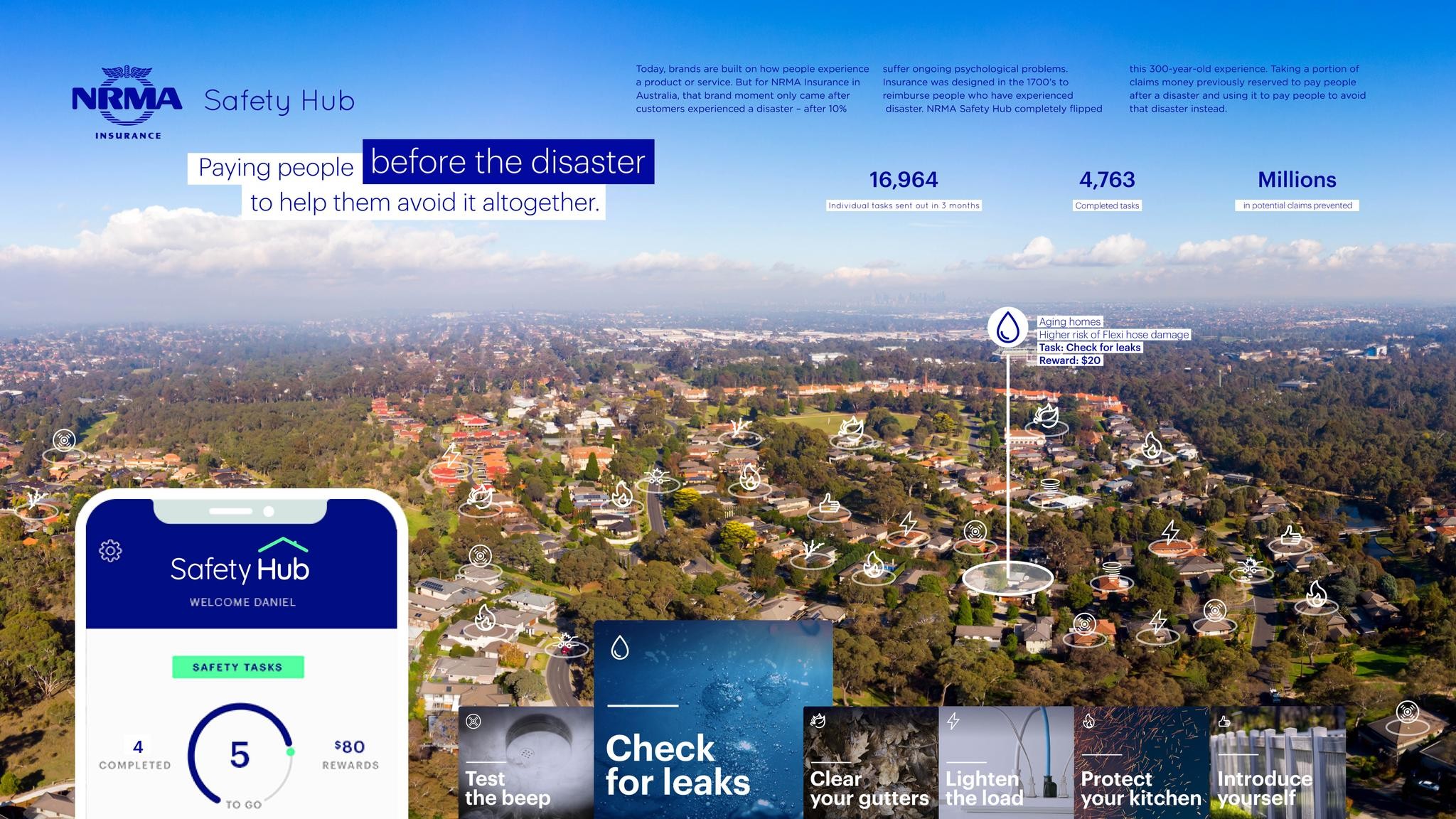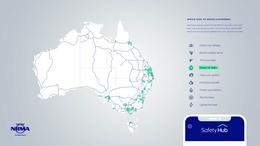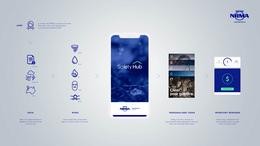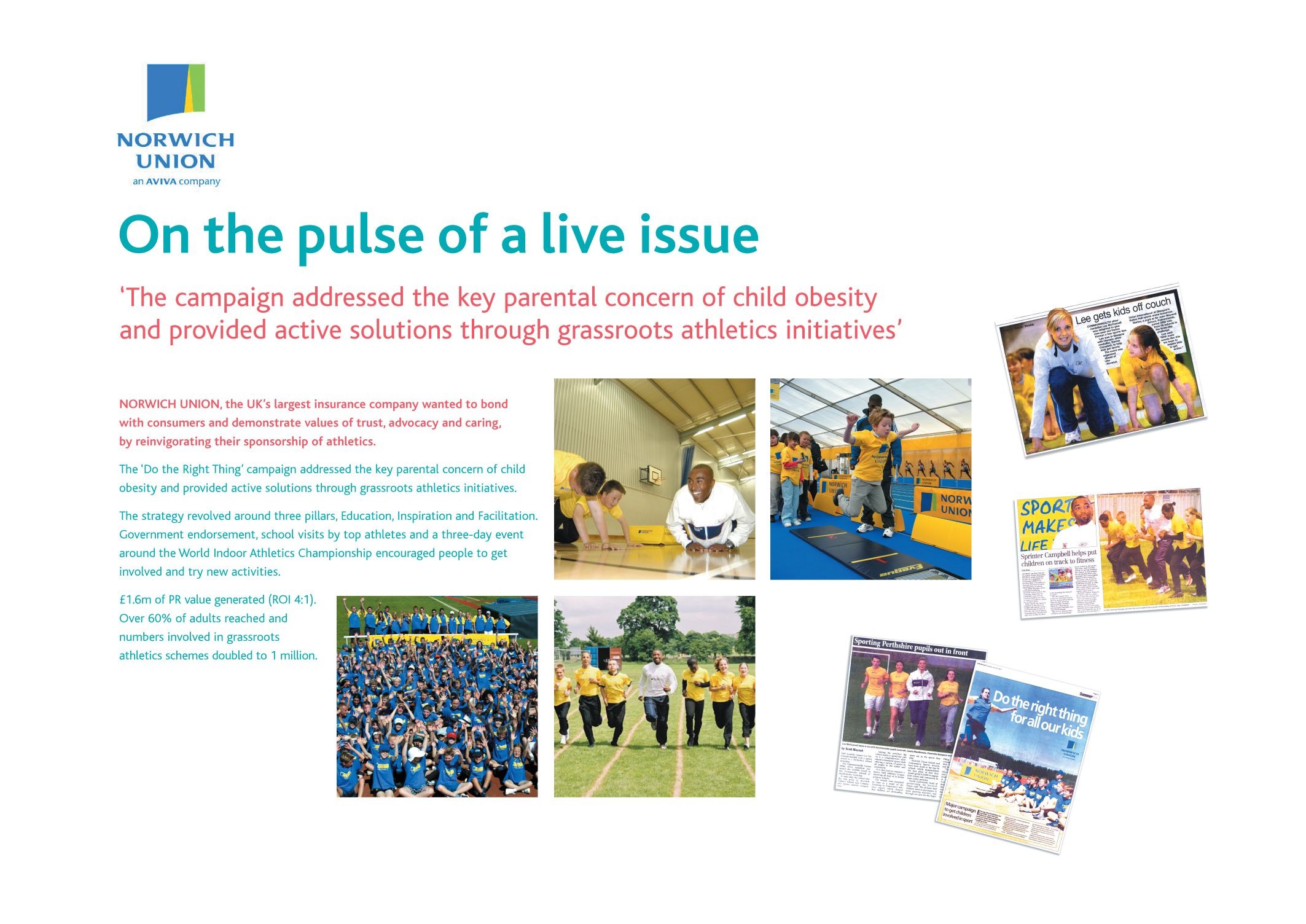Spikes Asia
Safety Hub
CHE PROXIMITY, Melbourne / NRMA / 2019



Overview
Entries
Credits
Overview
Background
Insurance companies make money based on two key things: How large their member base is, and the hope that only a small percentage of those customers claim.
With 10% of people making claims each year, and the other 90% only experiencing the brand once a year (when they renew and pay their policy) the results weren’t good on either side.
Our brief was to reduce the total claims paid out. While also allowing more customers to experience our service.
The solution lay hidden in our claims data.
With 90 years of experience and claims data, we found that the majority of claims in Australia were actually avoidable. Curious about how this could not only impact our business, but also make the lives of Australians safer, we combined creative teams, risk analysts, behavioural specialists, data scientists and developers to redesign the category - shifting it from proactive to reactive.
Idea
Safety Hub was not just an app. We redesigned the entire insurance category, changing how people experience insurance.
It started by bringing together different departments from marketing, product, data, claims, risk analysts and customer services to change the way the brand operates.
With 90 years of experience and claims data, we found some of the greatest risks to Australian homes were preventable. Like replacing Australia’s leading cause of flooding – an $8 flexi-hose. Or clearing gutters of leaves in storm areas. The basics.
We then used the claims money usually reserved to pay people after the disaster to help people be safer. And avoid disasters completely.
The Safety Hub was launched to 156,000 high-risk Australians with tailored comms journeys for each participant. From films, to real-time notifications, to personalised safety tasks designed to keep them safe
Strategy
First, we identified NRMA’s highest risk customers based on their location and risk propensity.
This audience was segmented into groups, based on the disaster they were most likely to face. They were then paid money to complete tasks to keep them safe.
56% of app users in were paid to complete fire hazard reduction tasks including checking power boards for overloaded appliances, testing the beep on smoke alarms and purchasing fire blankets to protect their kitchens.
43% of app users in storm prone areas were paid to participate in storm readiness tasks.
These customers were then invited to use Safety Hub, and instead of waiting to experience NRMA after a disaster, they experienced insurance to help them avoid a disaster.
Execution
The app was initially built as a working prototype for 2,000 customers in July. Giving us insights necessary to prove customers will engage with insurance if it provides them with personalized and relevant safety advice.
It was an opportunity for us to connect with customers on an emotional rather than financial level. Our data sources were essential in making sure that connection was meaningful and engaging.
Combining multiple data sources, we identified 156,000 high-risk customers susceptible to storm and cyclone, aging homes at risk of catastrophic internal flooding, and house fires.
They were then invited to download Safety Hub. Then we paid them in cash to complete ‘Safety tasks’ designed to reduce their risk of disaster – and claiming.
Behaviour was logged and analysed through Adobe Campaign and triggered the next best action for each customer, whether that was completing unfinished tasks or moving to the next one.
Outcome
16,964 safety tasks have been sent out with nearly 30% been completed.
Hundreds of thousands of dollars of potential claims have been prevented.
Most importantly, many Australian homes are now safer.
Engagement with Safety Hub was double that of existing NRMA app and received unprecedented levels of customer satisfaction.
· 79% of customers see NRMA Insurance as a more proactive insurer.
· 68% feel more valued.
· 82% Feel prepared to recover from an unexpected event.
Comments:
· “Excellent initiative, provided me with valuable knowledge on preventing future issues in my home:
· “I never thought to check pipes under the sink. Brilliant idea”
“Through the strategy and concept that CHEP Proximity developed, to the behaviourally-targeted, technical smarts that we executed through the Adobe Experience Could, Safety Hub is not just changing the relationship we have with our customers, it’s enabling safer living across the country.” Brent Smart, CMO IAG
Similar Campaigns
12 items






